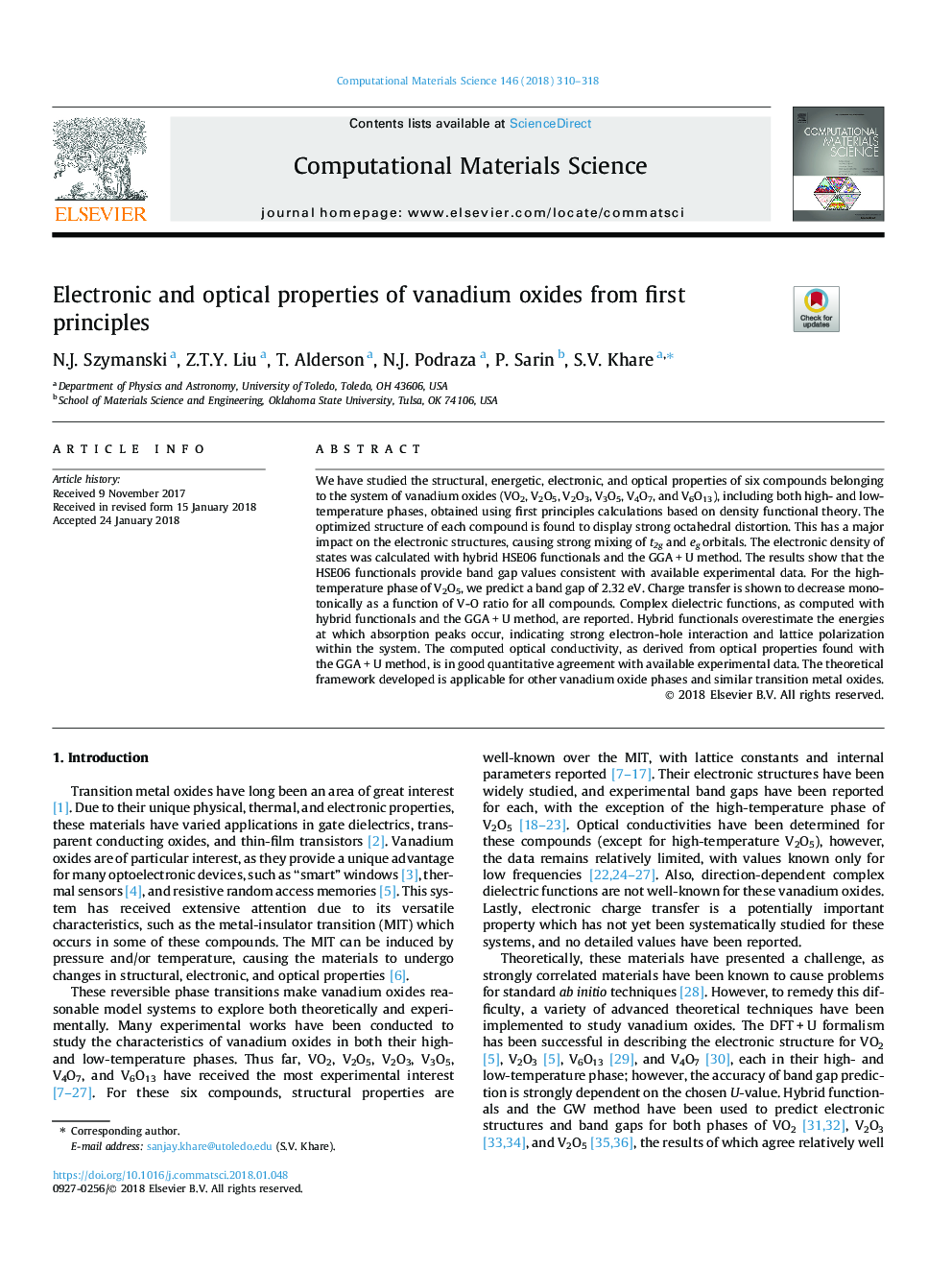| Article ID | Journal | Published Year | Pages | File Type |
|---|---|---|---|---|
| 7958080 | Computational Materials Science | 2018 | 9 Pages |
Abstract
We have studied the structural, energetic, electronic, and optical properties of six compounds belonging to the system of vanadium oxides (VO2, V2O5, V2O3, V3O5, V4O7, and V6O13), including both high- and low-temperature phases, obtained using first principles calculations based on density functional theory. The optimized structure of each compound is found to display strong octahedral distortion. This has a major impact on the electronic structures, causing strong mixing of t2g and eg orbitals. The electronic density of states was calculated with hybrid HSE06 functionals and the GGAâ¯+â¯U method. The results show that the HSE06 functionals provide band gap values consistent with available experimental data. For the high-temperature phase of V2O5, we predict a band gap of 2.32â¯eV. Charge transfer is shown to decrease monotonically as a function of V-O ratio for all compounds. Complex dielectric functions, as computed with hybrid functionals and the GGAâ¯+â¯U method, are reported. Hybrid functionals overestimate the energies at which absorption peaks occur, indicating strong electron-hole interaction and lattice polarization within the system. The computed optical conductivity, as derived from optical properties found with the GGAâ¯+â¯U method, is in good quantitative agreement with available experimental data. The theoretical framework developed is applicable for other vanadium oxide phases and similar transition metal oxides.
Related Topics
Physical Sciences and Engineering
Engineering
Computational Mechanics
Authors
N.J. Szymanski, Z.T.Y. Liu, T. Alderson, N.J. Podraza, P. Sarin, S.V. Khare,
